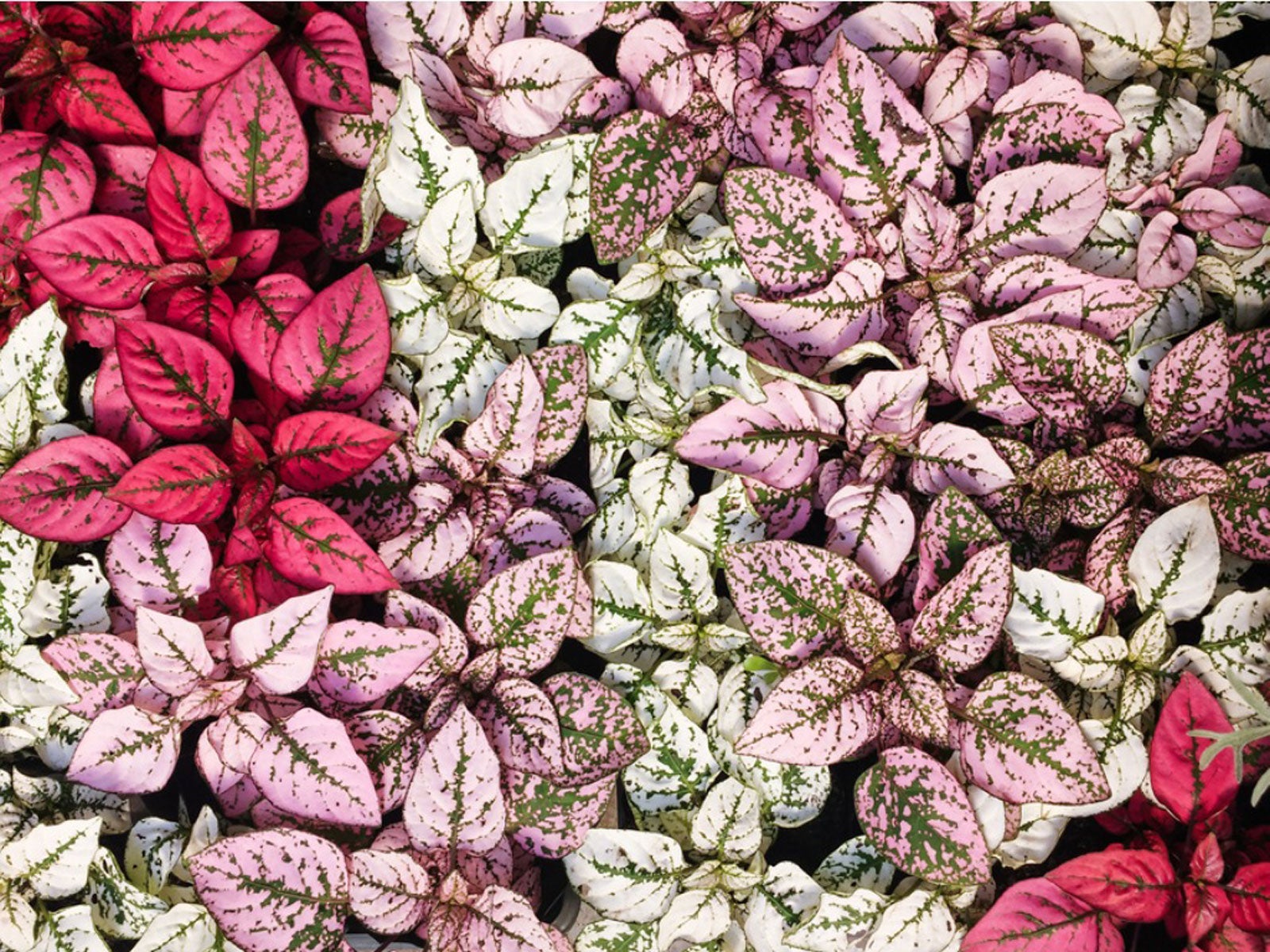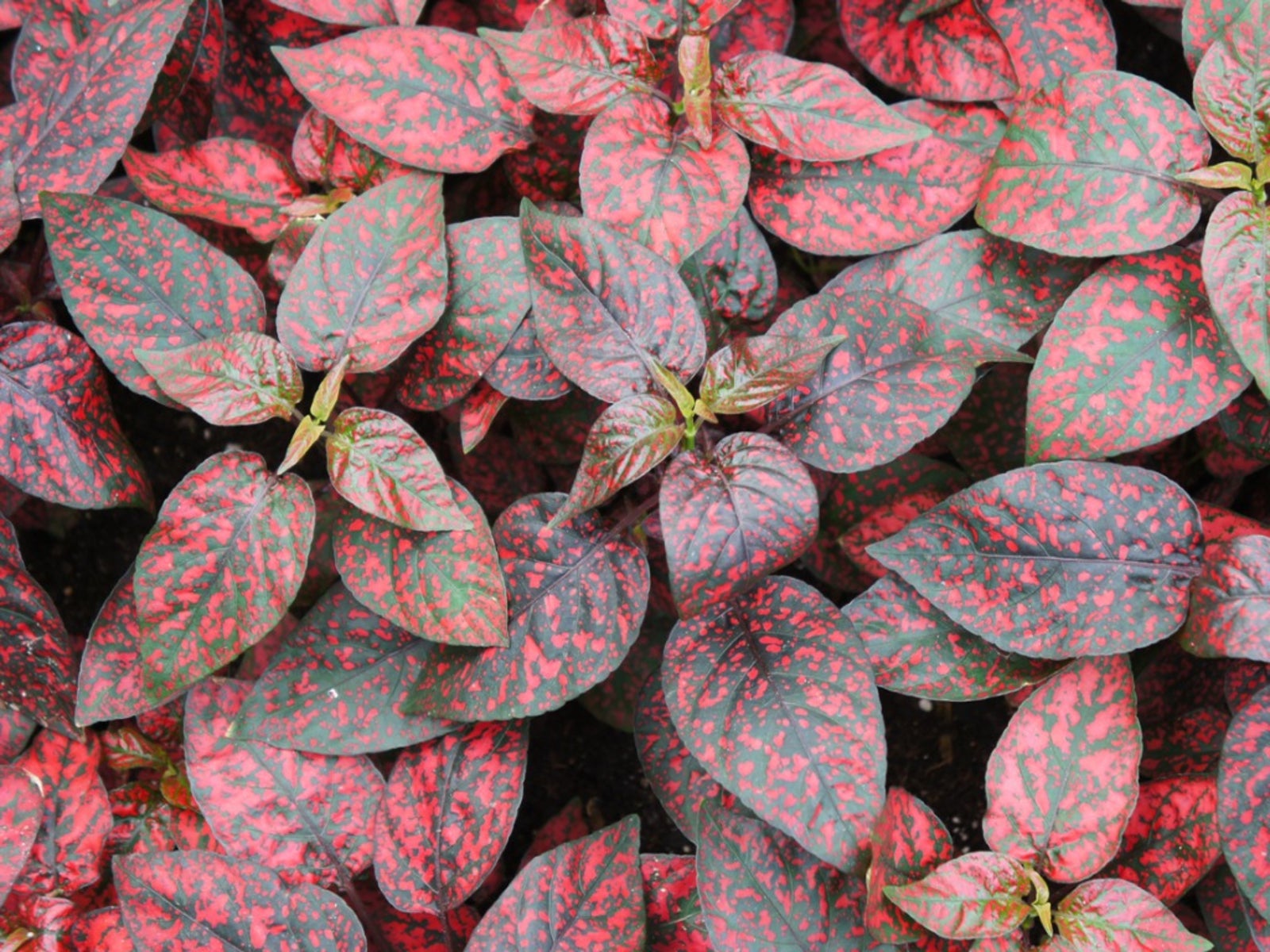Growing A Polka Dot Plant - Information On Polka Dot Plant Care Indoors And Out


Polka dot plants (Hypoestes phyllostachya) are common houseplants with colorful foliar displays. They are highly hybridized to produce a variety of colors and types of leaf spotting. Also called freckle face plants, these houseplants are easy to grow and have few pest or disease issues when maintained as indoor specimens.
Quick Facts about Polka Dot Plants
- Botanical name: Hypoestes phyllostachya
- Height: 1 foot (31 cm)
- Spread: 1 foot (31 cm)
- Sun exposure: partial
- Soil requirements: rich and acidic to alkaline
- Hardiness zones: USDA 10-11
- When to plant: spring when temperatures at night are at least 50 F (10 C)
How to Grow Polka Dot Plants
An interesting bit of polka dot plant info is that the plant was miscategorized for years. It is now recognized as a member of the Hyphoestes group, along with over 100 plants. Polka dot plants are from Madagascar. They are perennial herbaceous shrubs whose stems get woody as they age.
In its native habitat, the plant can get up to 3 feet (1 m) in height, but pot-grown specimens will usually be smaller, around 1 foot (31 cm). The tropical South African foliage plant is not cold-hardy but can persist outdoors in United States Department of Agriculture zones 10 to 11. It can live for years as a houseplant, even in artificial light.
The foliage is the main reason for growing polka dot plants. The oval leaves are dotted with darker spots in green and a base color of pink. Breeders have developed many other varieties, some of which have the green mottled spotting, but others are dotted with different hues.
There are purple, scarlet, lavender, and white speckled leaves. The foliage is an attractive foil for brightly colored perennial flowers and produces a beautiful mound. This adorable plant looks great tucked in a planter with other foliage plants, as part of a color display with flowers, or in summer borders for added texture.
The Splash Series comes in a host of colors with a green base leaf and mottled splashes of color in pink, white, rose, or red. There is also a Confetti Series with spotted dots that are a bit more sparsely scattered than those of the Splash Series.
Polka Dot Plant Care
Soil
As a tropical specimen, pink polka dot plants like well-draining, moderately moist soil with some organic amendments. However, they can also thrive in sand, loam, or clay soils with various pH levels. They have no salt tolerance and should not be grown in coastal soils. As indoor plants, they prefer rich potting soil or a homemade blend of compost, peat moss, perlite, and bonemeal.
Gardening tips, videos, info and more delivered right to your inbox!
Sign up for the Gardening Know How newsletter today and receive a free copy of our e-book "How to Grow Delicious Tomatoes".
Light
Polka dot plants are tropical understory plants in their native region. They do not do well in harsh sunlight, but the color of their leaves is best with some light. A partial shade location provides shielding from the burning sun rays while promoting the bright colors of the leaves. In full sun the leaves will crinkle and discolor, and the canes will lengthen and get leggy. The best site for a polka dot plant has bright but indirect light.
Fertilizer
When the soil is freshly amended, polka dot plants do not need to be fertilized often. If your polka dot plant is confined to a container, it will benefit from a regular feeding schedule. Once per month, feed the plants with a diluted houseplant fertilizer. The N-P-K ratio should be 10-10-10. During winter, suspend feeding until the light levels increase in spring. Outdoor plants may be fed a time-release granular formula with a higher nitrogen number.
Temperature
Polka dot plants may be grown outdoors where nighttime temperatures don’t drop below 50 degrees F (10 C), and daytime temps are at least 60 F (15 C). During summer, indoor plants may be moved outdoors to a semi-shady location. High temperatures will require more consistent watering, and in arid zones, the plants should be kept on saucers of pebbles filled with water for humidity or misted daily.
Pruning a Polka Dot Plant
In low-light situations, polka dot plants can get leggy. Pinching off the floppy growth will help encourage new leaves and tighter branching. Pinching should be done just above a growth node at the leaf axil. Use either scissors or pruning shears for larger stems. Thin, young stems may be hand-pinched. Regular pinching will enforce compact growth and full foliage and encourage new leaves and stems.
Polka Dot Plant Propagation
Polka dot plants may be propagated from either seed or cuttings. Sow seeds indoors 10-12 weeks before the last spring frost. The germination temperature for seeds is at least 70 degrees F ( 21 C). Expect seedlings to emerge two weeks after planting. Cuttings can be taken anytime but will establish more quickly in spring or summer.
Remove terminal growth at a node and pull off the leaves closest to the end. Dip the cutting in a rooting hormone and put it in a soilless growing medium such as peat moss. Soon roots will emerge. After the cutting has a thick complement of roots, plant it in the soil.
Polka Dot Plant Problems
Indoor polka dot plants are rarely bothered by disease or pests. When the container is kept too moist or doesn’t drain properly, soil gnats and root rot can occur. Overhead watering where the plant’s leaves remain wet can lead to powdery mildew. Outdoor plants may be bothered by aphids, mealybugs, or leafhoppers but can be managed with neem oil or beneficial insects.

Bonnie Grant is a professional landscaper with a Certification in Urban Gardening. She has been gardening and writing for 15 years. A former professional chef, she has a passion for edible landscaping.
-
 Looking For Plants To Give You The Soft And Fuzzies? Try These 5 Fuzzy Leaf Plant Options
Looking For Plants To Give You The Soft And Fuzzies? Try These 5 Fuzzy Leaf Plant OptionsLovers of texture, drama, silver foliage and tactile plants will adore these special sensory garden additions. These fuzzy leaf plant options will leave you all aglow
By Susan Albert
-
 Get Ready For A Summer Of Hummers! Grow These Full Sun Hummingbird Plants and Flowers
Get Ready For A Summer Of Hummers! Grow These Full Sun Hummingbird Plants and FlowersIf you’re lucky enough to enjoy a sunny backyard, make sure you are maxing out on your pollinator opportunities and grow these full sun hummingbird plants and flowers
By Tonya Barnett
